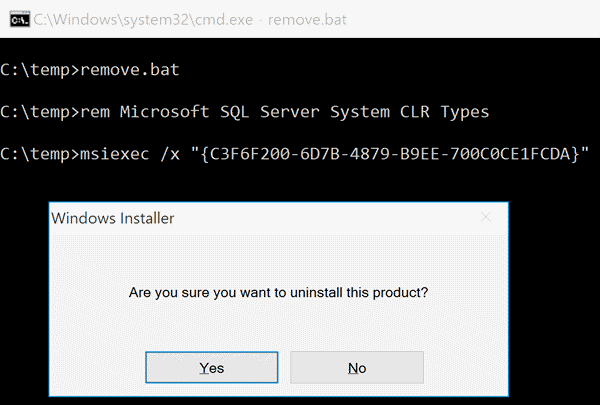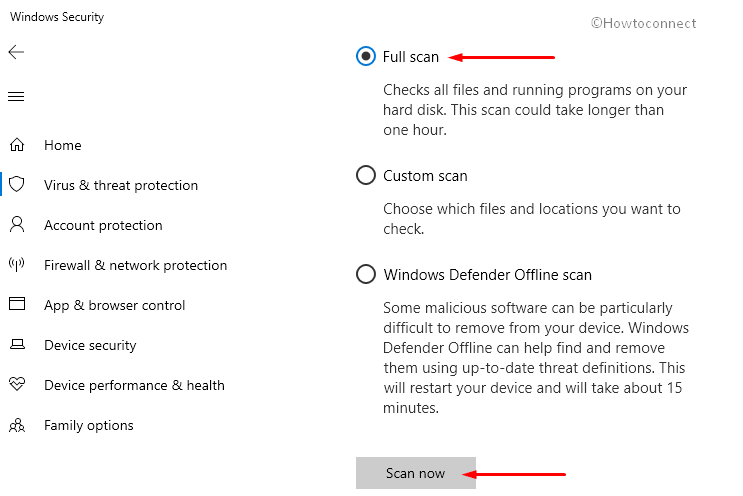

- #Wmic uninstall failed how to
- #Wmic uninstall failed install
- #Wmic uninstall failed 64 Bit
- #Wmic uninstall failed software
- #Wmic uninstall failed Pc
Posting brain or answer dumps for Fortinet certifications is prohibited as they are copyrighted material.
#Wmic uninstall failed software
So if you encounter this error, you should check your command for such whitespaces, remove.
#Wmic uninstall failed how to
Next, please provide us as much information about your problem as you possibly can. How to fix the error Invalid alias verb with WMIC commands. If you're having a problem with a Fortinet product, first, make sure you submit your request to Fortinet TAC if you have a valid support contract. Here you can ask for help, share tips and tricks, and discuss anything related to Fortinet and Fortinet Products. Additionally, if you don't wish to hang on failed nodes, use the /failfast:on flag to quickly skip a node that isn't responding.Fortinet is a global leader and innovator in Network Security.
#Wmic uninstall failed Pc
Examples for doing it by PC or a text file is to use the /nointeractive flag. You'll need to confirm 'y' that you want to uninstall on every node unless you use the nointeractive flag. Which iterates through your list, skipping nodes that are invalid (eg:machine is turned off) and those that don't meet the criteria. >/failfast:on product where name="" call uninstall /nointeractive You pop open a WMIC shell with appropriate permissions and enter the following command: To speed up getting the new status, we could refresh the application Deployment Evaluation Cycle and the Machine Policy Retrieval & Evaluation Cycle on our client. We could distribute the changed app to our DP, and then deploy this changed application to our client.
#Wmic uninstall failed 64 Bit
You have a flat text file of all your computer's names stored in c:\computers.txt. We may need to remove our failed deployment from our CM console. Can be found in regedit, since its another computer open regedit, File>'Connect to remote registry' enter computer name, then expand HkLM>Software>Microsoft (Wow6432Node then Microsoft if 64 bit software on 64 bit OS)>Windows>CurrentVersion>Uninstall>find software (best to right-click on 'Uninstall' then find and just type in snag. however you've received 3 tickets so far about an icon on the desktop. You’ll now see the wmic:root\cli> prompt in the console. At the prompt, type the following command, and then press Enter: wmic. mfl findstr /v /i uninstall > moflist.txt & for /F s in (moflist. To uninstall a program using Command Prompt, you have to use the Windows Management Instrumentation Command-line (WMIC) software utility.

#Wmic uninstall failed install
In a panic, you asked all your users to blindly install the new version of Adobe reader straight from Adobe's site. Set the WMI Service type back to Automatic and restart WMI Service cd /d c: ((go to the root of the c drive, this is important)) Run following command specifically adopted for 2012 Clustered servers to recompile the MOFs: dir /b. Let's assume you just got word that Adobe Reader has a serious flaw in it's old version. It’s the white space in the where condition that was causing it. With a quick look, it would not seem like there’s anything wrong with the command.

node:ComputerXYZ product where "vendor like 'adobe%'" get name,version,identifyingNumber ) c:\>wmic useraccount where username 'test1' set PasswordRequiredtrue - Invalid alias verb. Surround the like phrase in double quotes and your search criteria in single quotes, and use % as the wildcard symbol. Here is how you use wildcards in your search: >/node:ANOTHEREXAMPLE product where vendor="Apple Inc." get name,vendorĪ small hint if you have special characters like '-' or '/' in the computer name you need to use ' ' characters in order to get information from client) Here's an example scanning a networked machine for all installed applications from the vendor "Apple, Inc" If you would like to filter for a specific product, you may do so. This command asks WMI to reply with a list including the Name, Version, and Vendor of all compliant software installations. >/node:COMPUTERNAME product get name,version,vendor So let's find out if a particular node even has our target software (Spiceworks does attempt to list this information in its software scan) Though formatting the replies is beyond the scope of this "How To", much more information can be found on the internet. With our WMIC prompt, we can ask many questions of a node (or nodes) and receive some nicely formatted replies.


 0 kommentar(er)
0 kommentar(er)
